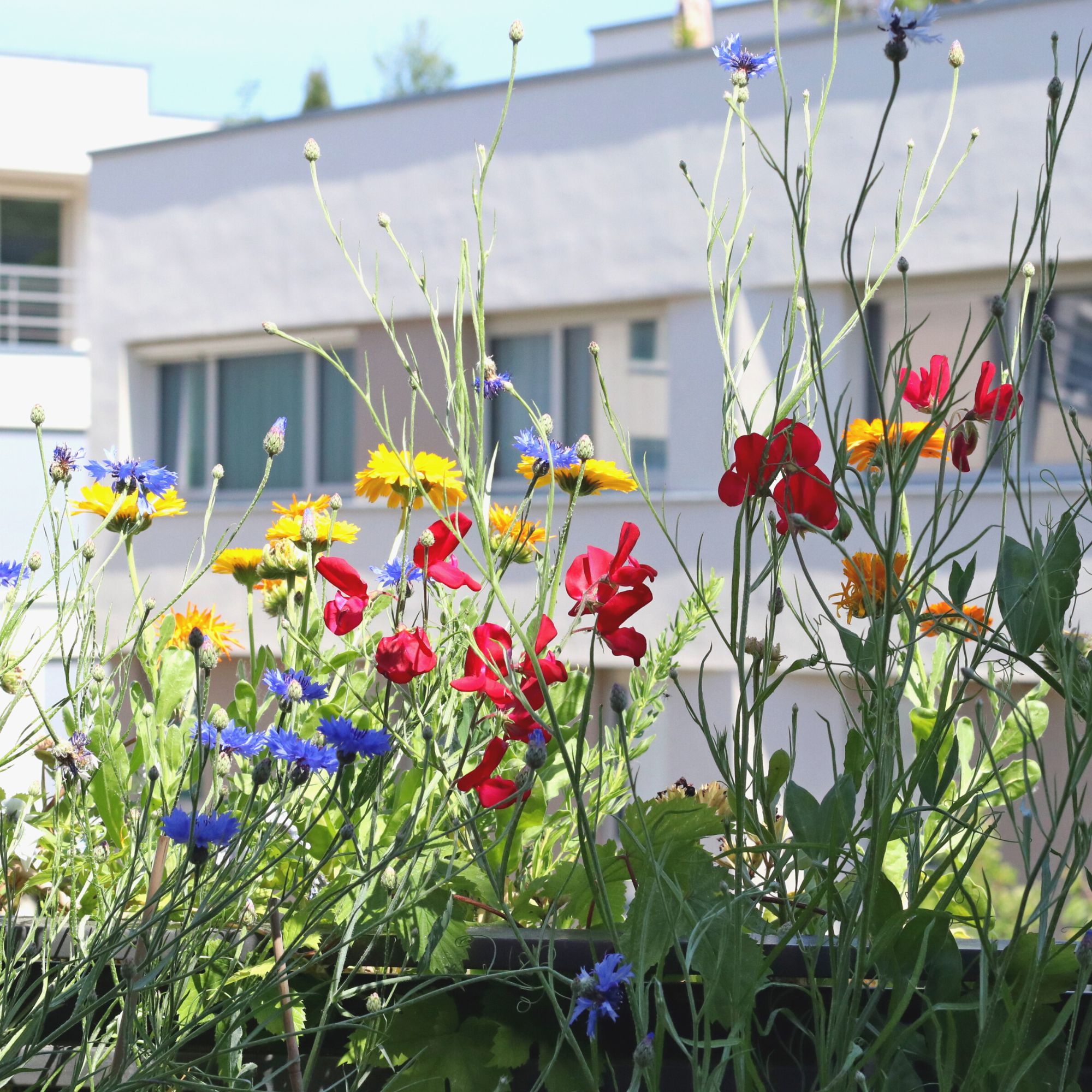
If you've always dreamed of growing your own wildflower meadow, you may have felt restricted due to the size (or lack of it) of your outside space. But what if we told you that you didn’t need a giant garden to grow your own wildflower meadow? You just need to know how to grow a mini meadow instead.
Yes, there’s no doubt that small gardens can be limiting. But size doesn’t really matter when it comes to meadowscaping, as there are so many options to grow a mini meadow on your patio, balcony, or small garden. In fact, you can even grow a mini meadow if you only have a windowbox at your disposal!
As Charlotte Denne from Kent Wildflower Seeds explains, ‘It’s a common misconception that you need to have a lot of space to grow wildflowers, but these pioneer plants often establish where others won’t and can tolerate a wide range of soil types and conditions.’ So, if you want to grow a mini meadow, this is everything you need to do it.

What you'll need
This box should be more than enough to cover a small garden or a few pots to make a mini meadow in your outdoor space.
Before you sow any wildflower seeds to grow your mini meadow, you'll need to rake the soil in your borders or lawn.
To ensure a happy and healthy mini meadow, you'll want to keep the area well-watered. Avoid using a garden hose, as this can wash away the seeds.
Step-by-step
1. Understand the importance of mini meadows
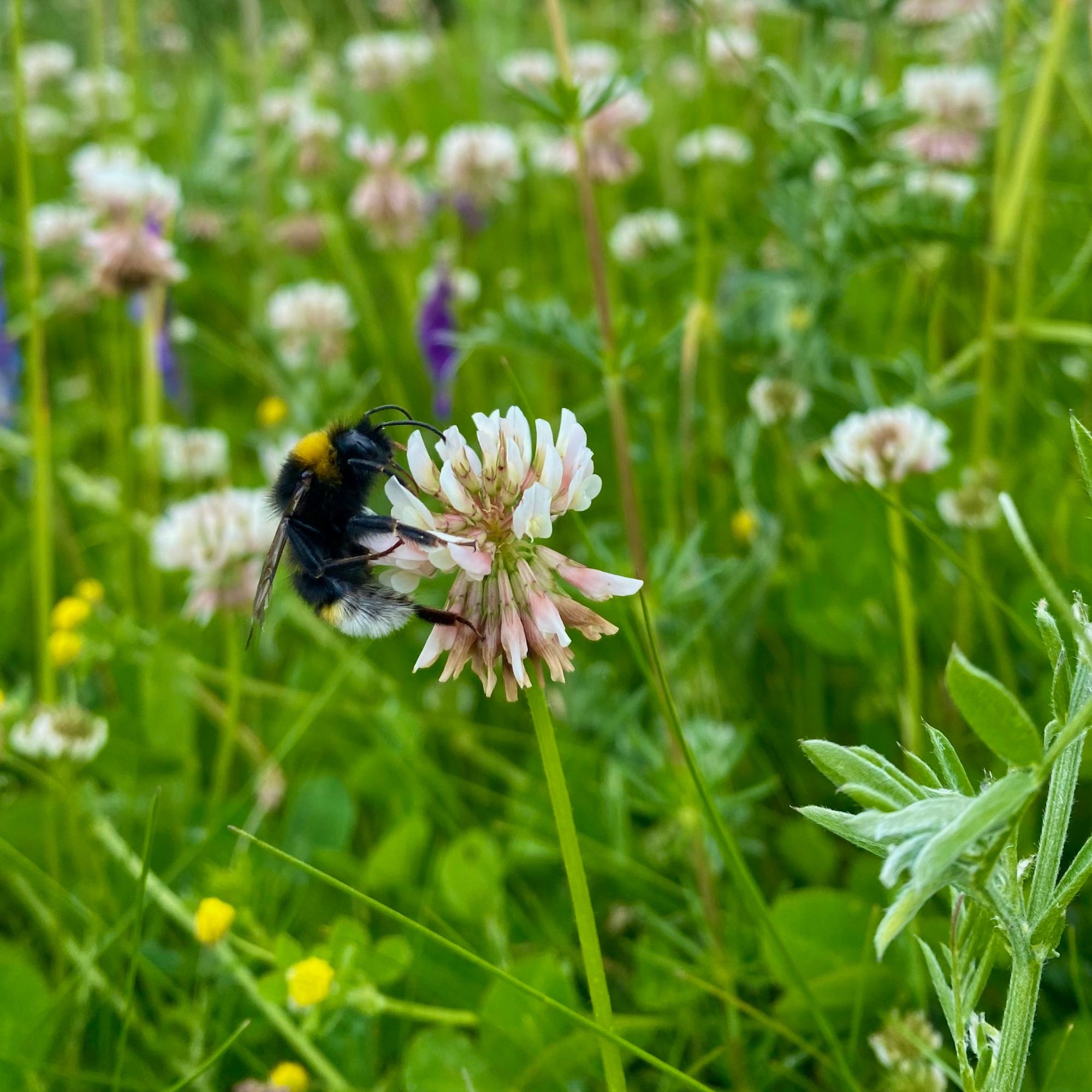
In a world where we’re often connected to screens and technology, our gardens can offer some much-needed calm amidst the chaos. And while there are so many garden ideas out there, opting for a mini meadow that’s truly at one with nature has a wealth of benefits.
In fact, before you start growing a mini meadow, we think it’s important to understand just how crucial this type of planting is. After all, mini meadows are undoubtedly beautiful to look at, but they also play an essential part in our natural ecosystem.
This is echoed by Charlotte, who says, ‘We have lost 97% of our native wildflower habitats in this country, so bringing British hedgerow and meadow flowers into your planting schemes is a simple way to help re-establish the nature corridors that support everything from the crops growing in our fields to the health of the soil beneath our feet.’
She adds, ‘You’ll also find the influx of pollinating insects, birds and small mammals enriches the experience you have of being in your garden.’
2. Choose your growing location
If you have a small garden footprint, you may assume that you can’t grow a wildflower garden or meadowscape. But that’s not the case at all. Anyone can grow a mini meadow, no matter whether they have a small amount of outside spac or even a balcony garden. Here are a few options to choose from:
- Plant in a garden border: Yes, you can grow a mini meadow in your garden borders, no matter how small they are. Doing so can even improve the quality of your soil, and Charlotte suggests to, ‘Look for a mix that incorporates a range of flowering times and flowering heights and also aligns with the feel of the existing planting in your garden.’
- Plant in a vegetable patch: If you’ve already made steps to grow vegetables in a small garden, you may already have a small vegetable patch at your disposal. So, why not grow your mini meadow with your crops? Charlotte explains, ‘Wildflowers like sainfoin and red clover are nitrogen fixing and support soil health while species like borage and wild carrot attract aphid eating insects which can help control pests and reduce disease.’
- Plant in pots: If you only have a space for a container garden on your patio or balcony, don’t worry. You can still grow a mini meadow, even if you don’t plant your wildflower seeds directly into the ground. ‘The perfect environment for a micro meadow, growing wildflowers in a pot means you can take control of the water and light levels the plants receive,’ explains Charlotte.
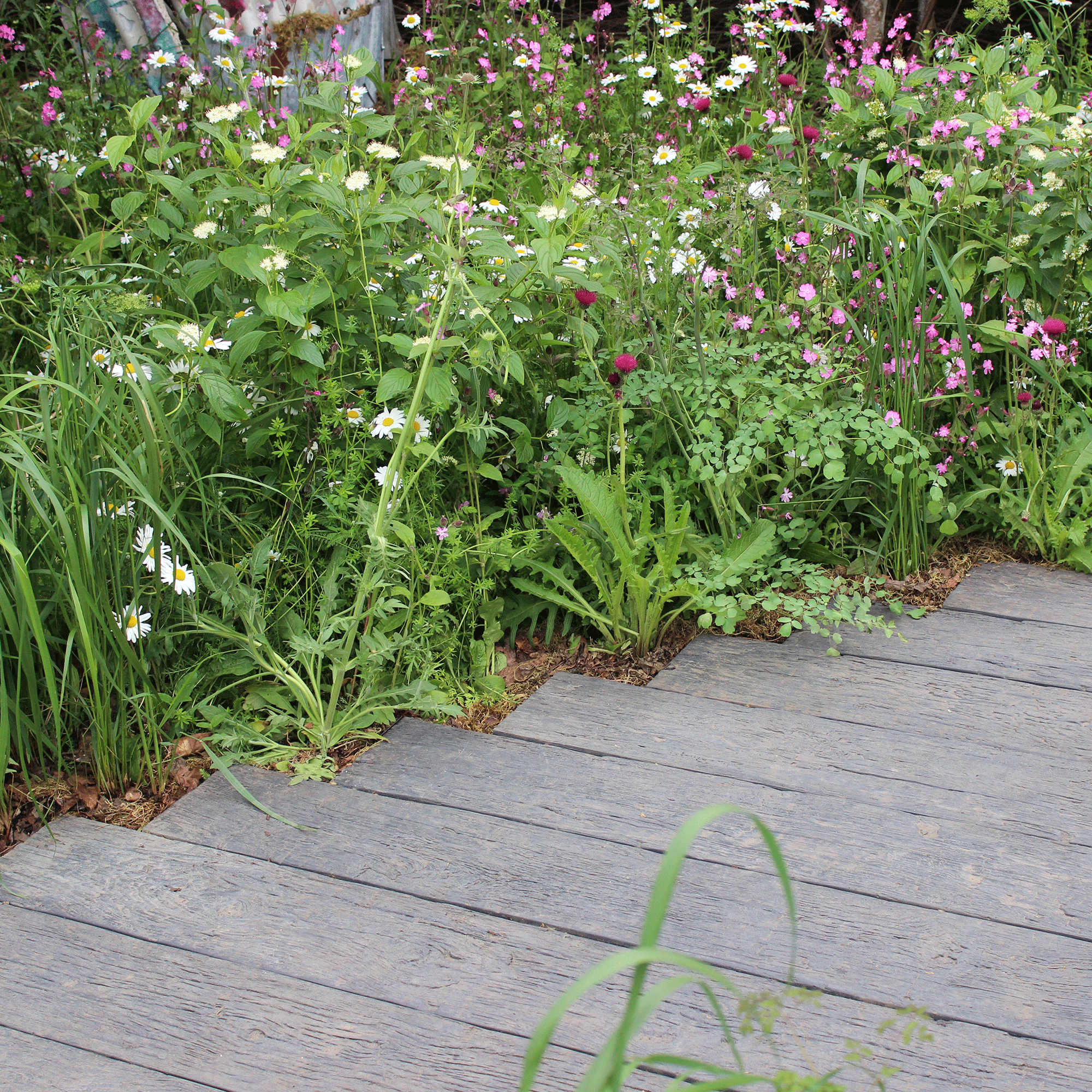
- Plant in window boxes: Typically, window box planting ideas don’t involve wildflowers, but they’re ideal for those short on space. Charlotte says, ‘Low-growing wildflower species are ideal for window boxes and hanging baskets, and many will spill over the edge as they grow offering that iconic trailing look given by plants like lobelia and fuchsias. This Wildflower Mix for Window Boxes & Containers is packed full of low-growing, nectar-rich, native wildflower species which will encourage a little bit of the wild into your small spaces.’
- Plant in your lawn: Grass lawns have always been the ‘done’ thing, but as more people choose to keep clover in their lawns, they’re also embracing mini meadow lawns. This is a little trickier, though, and Charlotte says, ‘If you’d like to create a micro-meadow in an area of established lawn, you will first need to control the grass as the grass will always outcompete wildflowers. In small areas, you can do this by cutting out the turf - make sure to cut down and remove as much of the root system of the grass as possible. Scatter your chosen wildflower mix and water well until the plants are established.’
3. Choose the perfect sowing time

What we love most about wildflowers and mini meadows is the fact that there are no hard and fast rules. And while it’s important to know when to plant wildflower seeds, the window is fairly large.
Ideally, you should sow wildflowers during spring when the soil is just starting to warm up. But don’t worry if you miss the boat, as you can also sow wildflower seeds in autumn - and Charlotte even says that, ‘If choosing a mix with perennials, an autumn sowing will give these a head start for the following year.’
Autumn is also the prime time to sow your yellow rattle seeds for those looking to grow a mini meadow on their lawn. ‘This is because the seed needs to be exposed to a prolonged period of cold and wet conditions to vernalise,’ says Charlotte. ‘It is best to use freshly harvested seed as the rate of germination dormancy slowly increases as the seed ages.’
Before sowing your yellow rattle seeds, you’ll also need to scarify your lawn to give the seeds the best chance of success.
4. Sow your seeds
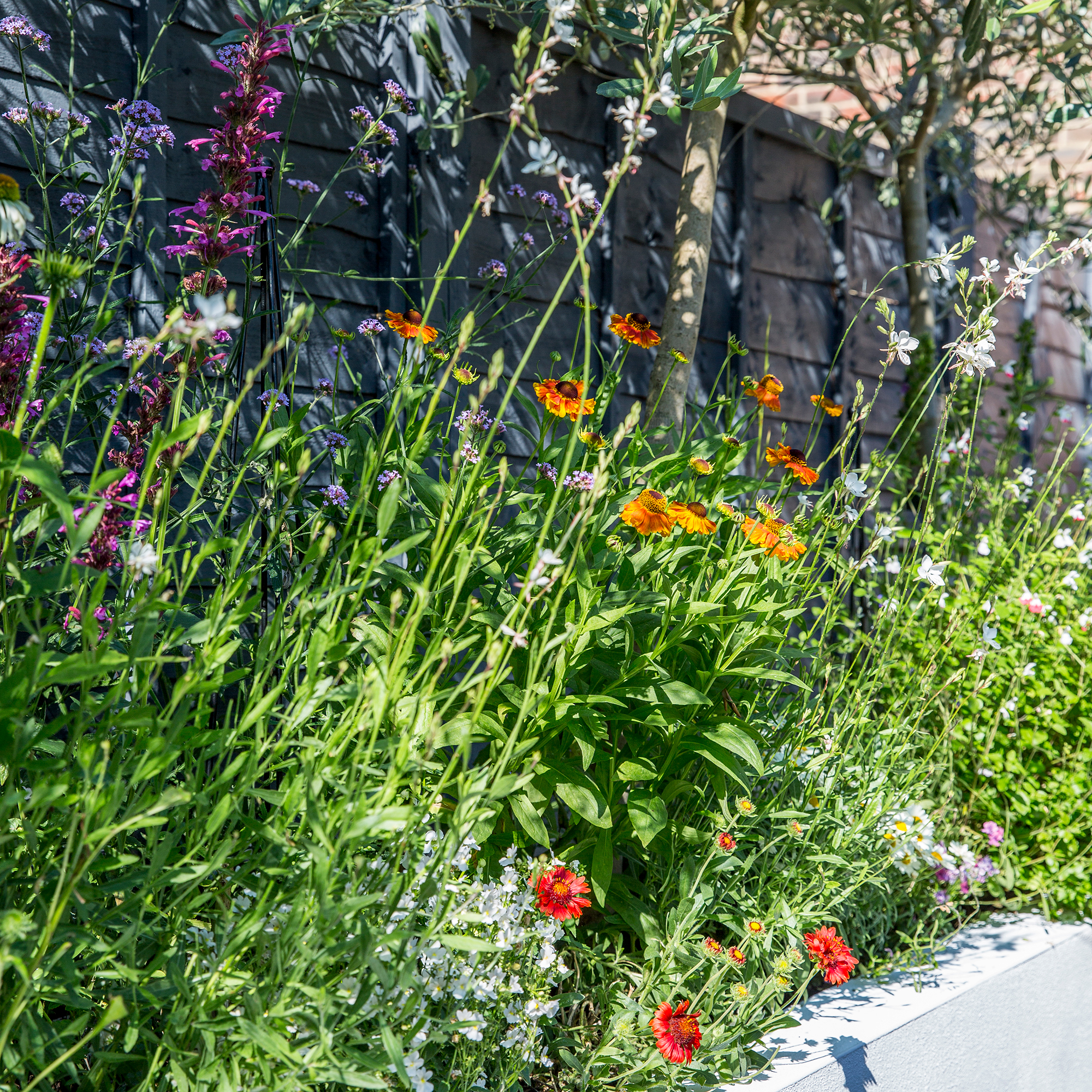
When it’s the prime time to sow the wildflower seeds for your mini meadow, you then need to sow them. To do this, Charlotte says you should ‘Start with a bare seedbed. Wildflower seeds will not establish on grass or if competing with other plants in a packed border.’
Before sowing your seeds, it’s a good idea to rake the seed bed and get rid of any weeds if there are any present. However, Tony Williams, Estates Manager at Mount Ephraim Gardens warns, 'Avoid turning the soil too deeply, as this can bring dormant weed seeds to the surface.'
Alongside this, you should always sow wildflower seeds into moist, free-draining soil.
Then, you have options. You could simply scatter your seeds across the soil, creating a random mini meadow, or you could sow them with a purpose to create a more defined meadow. However, there is a third option to sow the seeds into seed trays - but if you’re looking for a wilder, more natural look, scattering is your best bet.
After you’ve sown your seeds, you then need to ensure that they are well-watered. The last thing you want is for the new seedlings to dry out, so make sure you create a watering schedule that works for both you and your seedlings.
5. Leave them until early spring
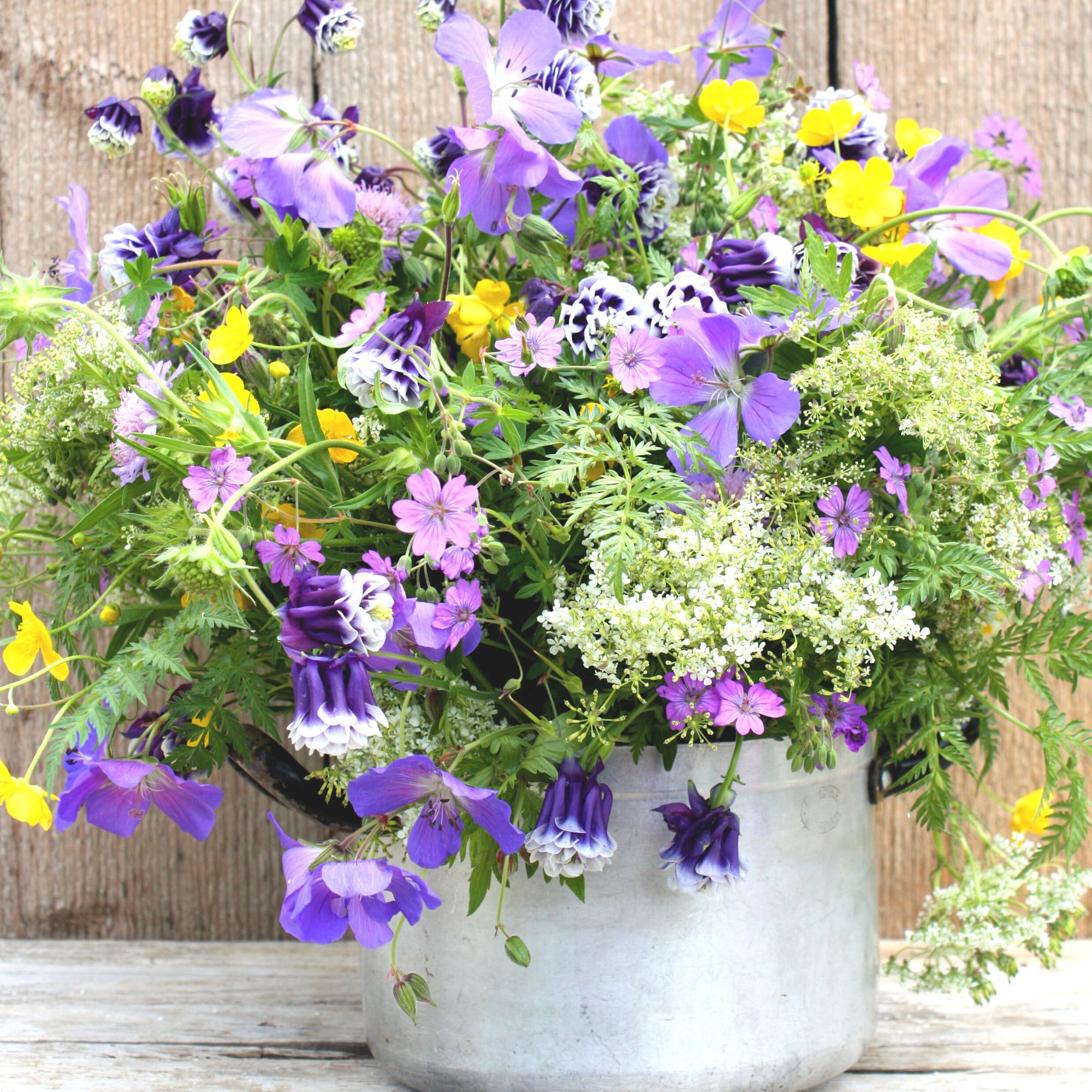
You shouldn’t have to wait too long to see the fruits of your labour, as wildflower seeds take around 2-3 months to grow. And while you may feel inclined to cut back your mini meadow during the winter months, Charlotte urges you to consider.
She says, ‘Consider leaving your wildflowers until you start to see new growth in early spring before cutting them back as insects and small mammals overwinter in their spent stems. Some also provide food for seed-feeding birds, while others play host to the caterpillars of certain butterflies.’
Thankfully, you don't have to do much else. Tony explains, 'During the first year, monitor the area for weeds and remove them as necessary, particularly aggressive perennials that can outcompete your wildflowers. Watering will be needed during dry periods, but meadows generally require less water than traditional lawns. '
FAQs
What is a mini meadow?
A mini meadow is essentially a patch of wildflowers that are grown in a relatively small space. Traditionally, mini meadows are grown as lawns, but in recent years those without gardens have also found ways to create mini meadows in pots, window boxes, and more.
Mini meadows are essential for rewilding efforts and for encouraging pollinators and wildlife into your garden, and they can also help to improve the quality of your soil.
You can also grow a mini meadow as an annual or perennial patch of wildflowers, but even as wildflowers are excellent self-seeders you’ll find that annuals almost always come back anyway.
How long does it take to establish a wildflower meadow?
Although wildflower seeds germinate extremely quickly and seedlings will produce beautiful flowers within just a few months, it’s important to note that it can sometimes take many years for a wildflower meadow to establish itself fully.
To do this, it needs to survive the winter months and successfully self-seed year after year. In most cases, this will take anywhere between three and five years. So, don’t give up if your wildflower meadow takes a few years to look its best.
So, will you be growing your own mini meadow?







